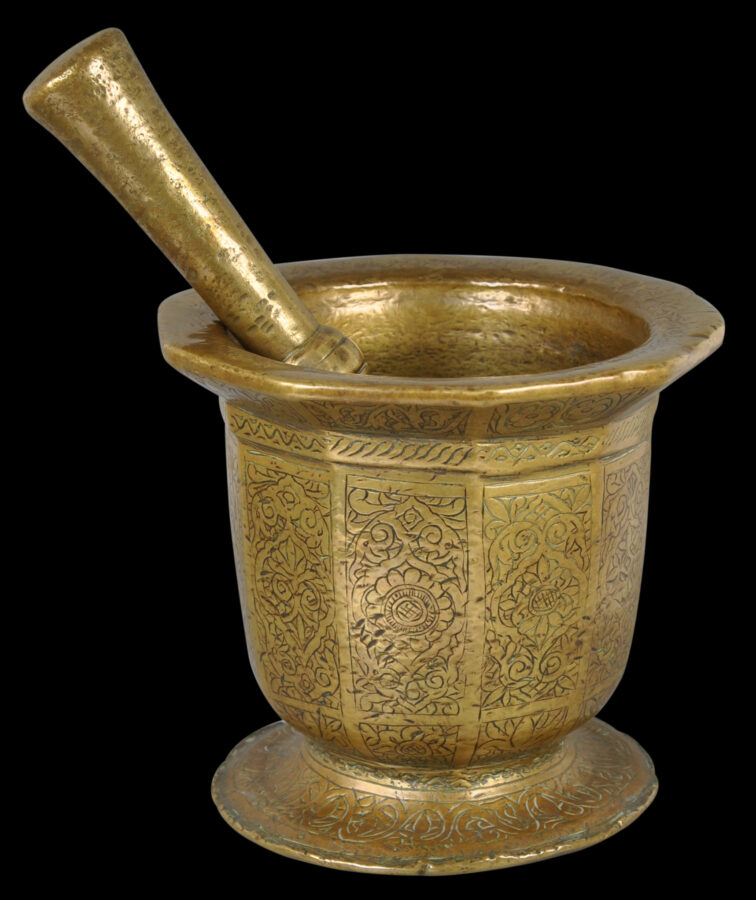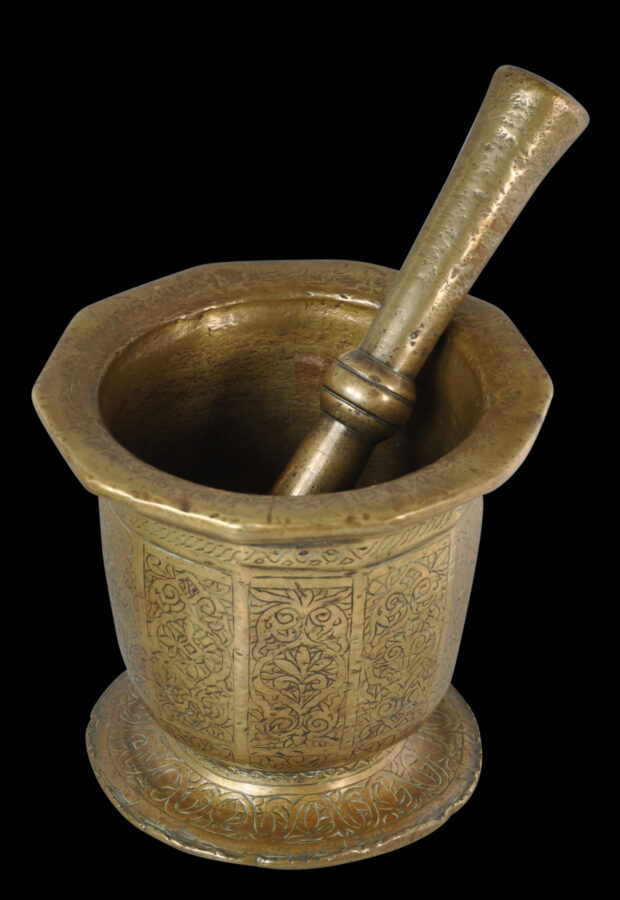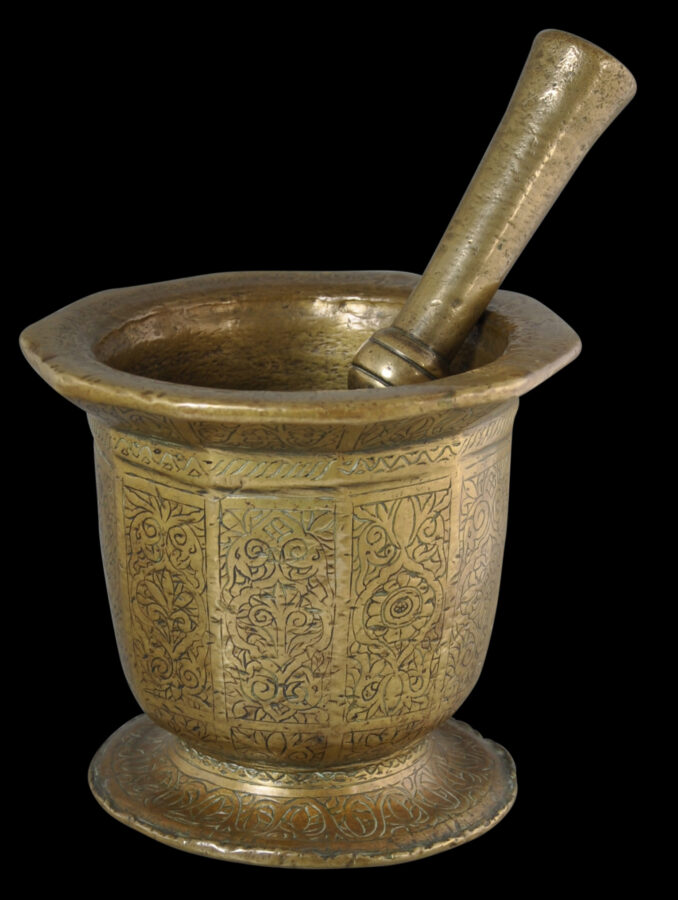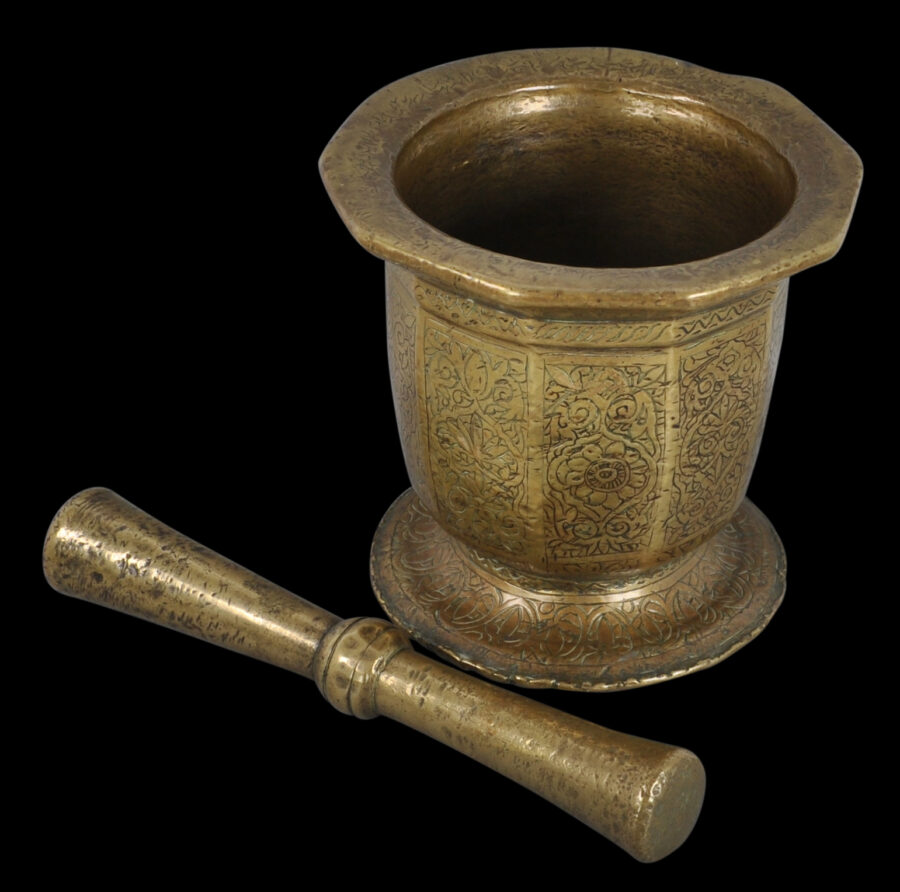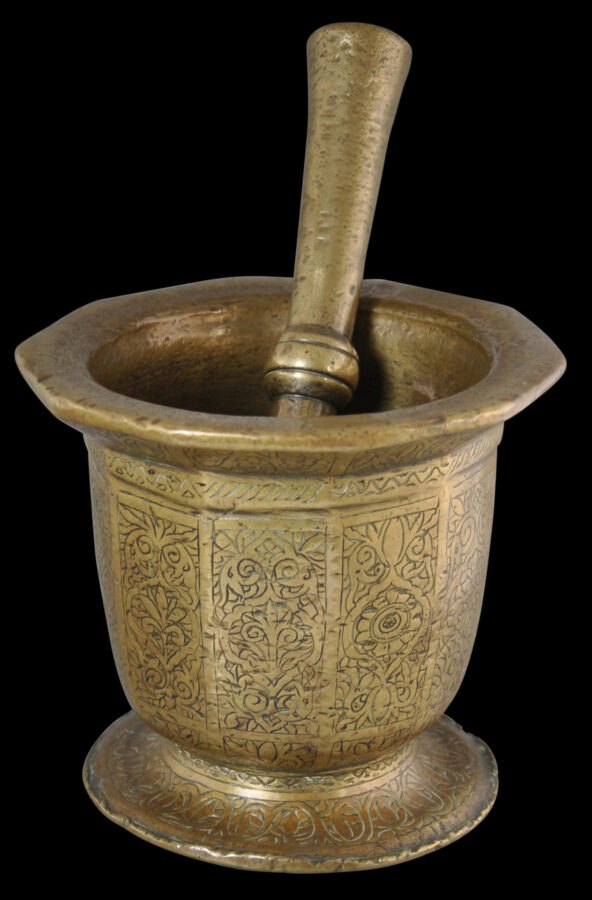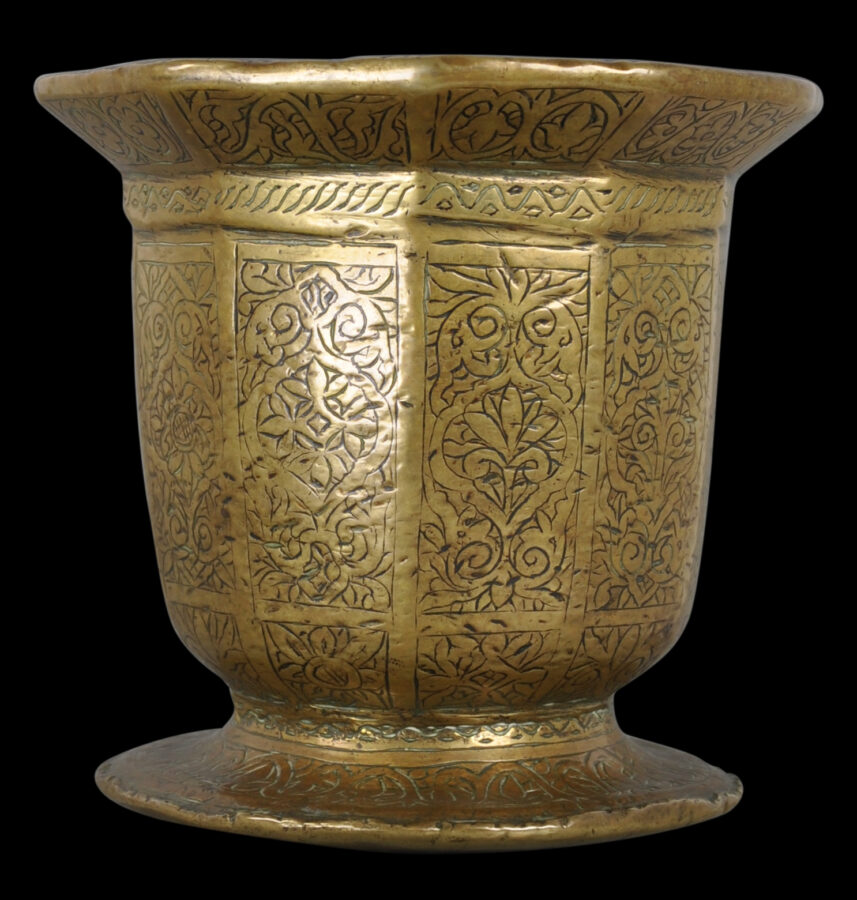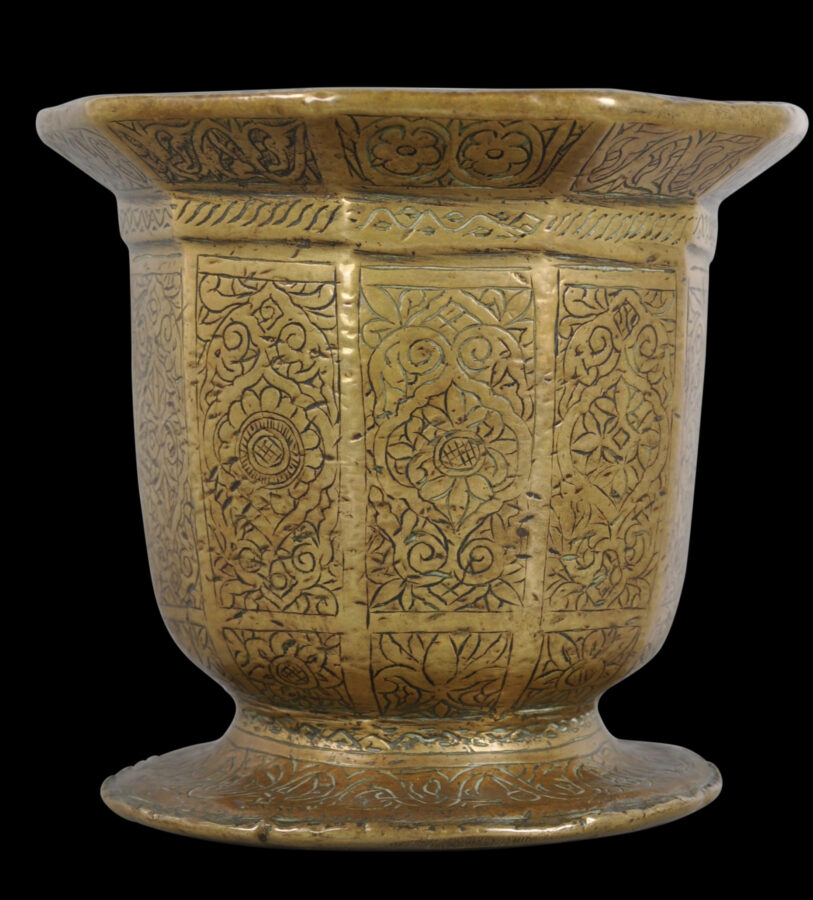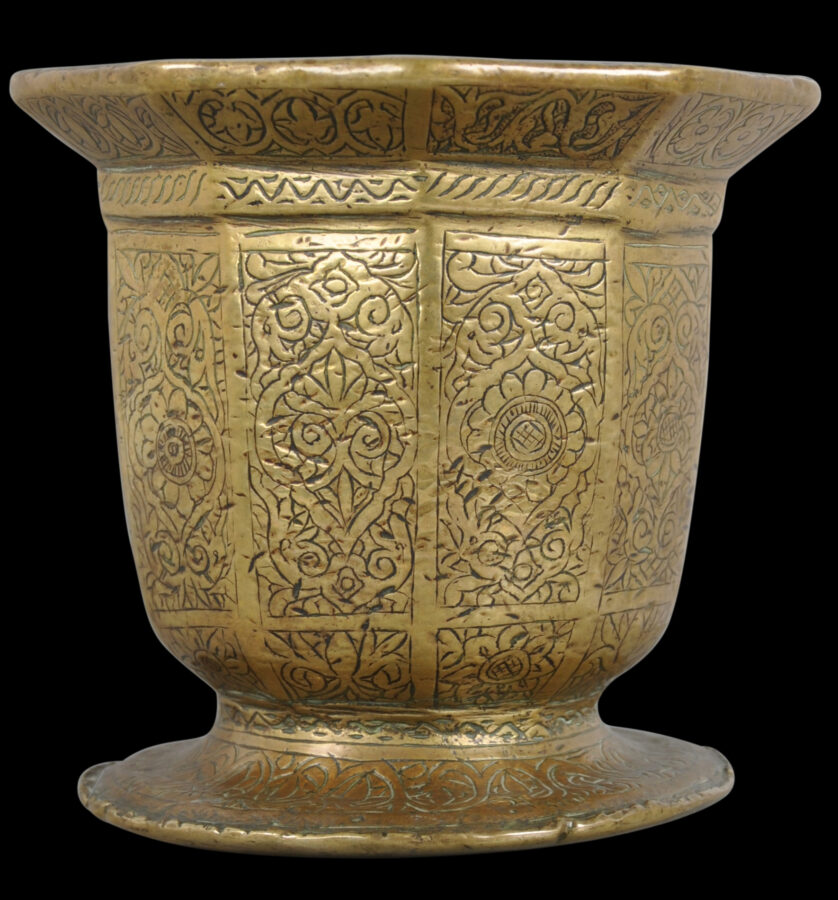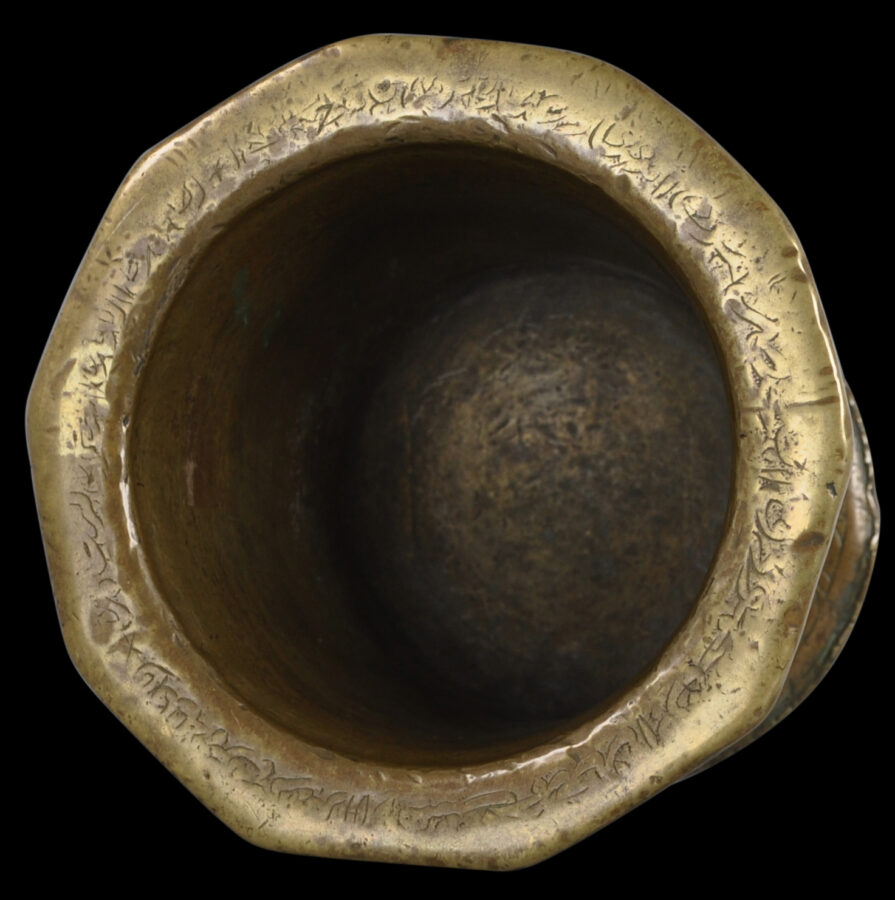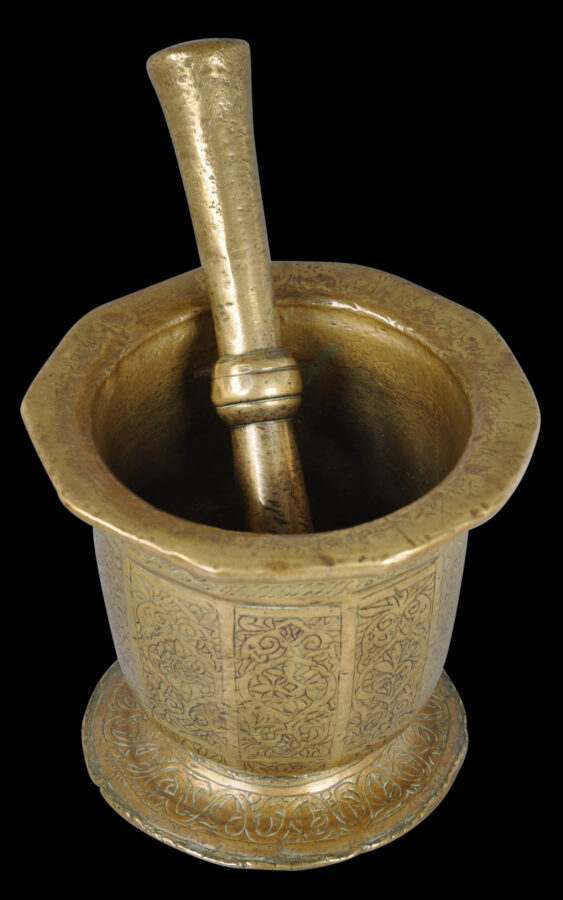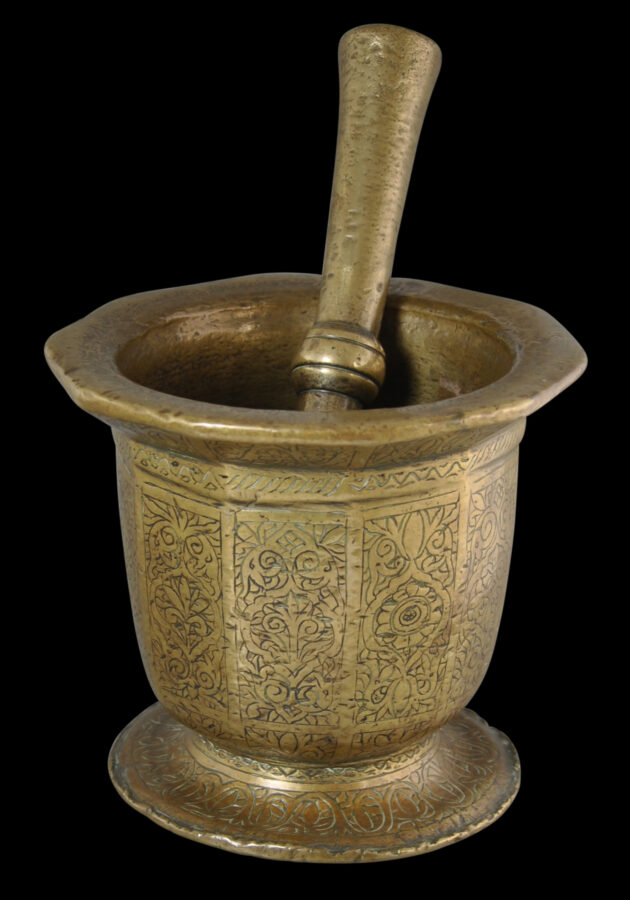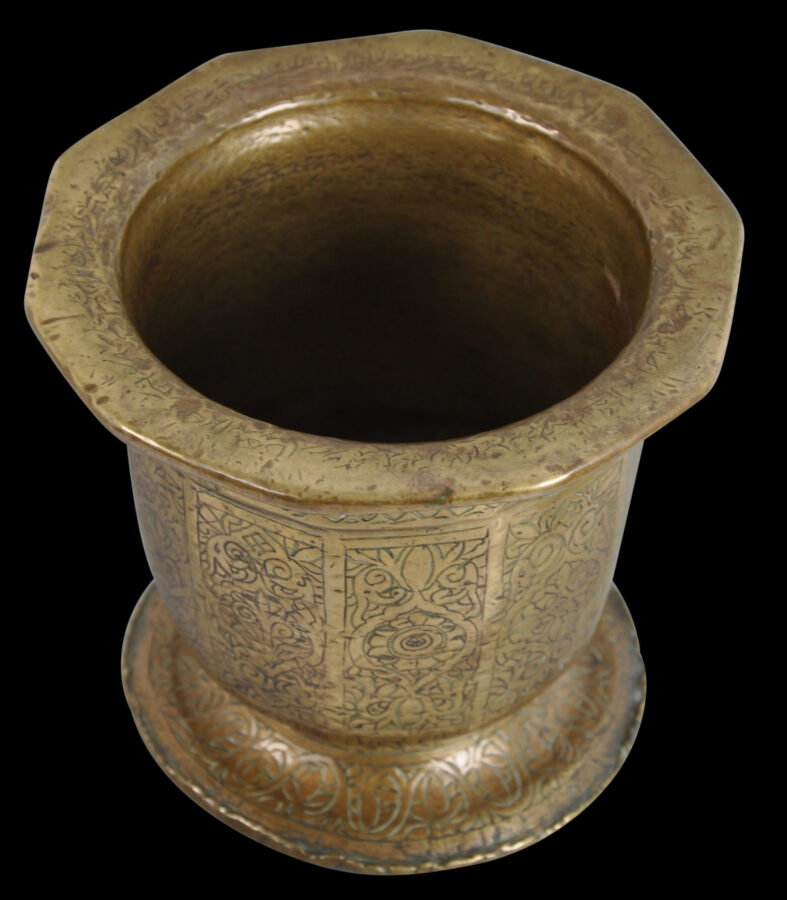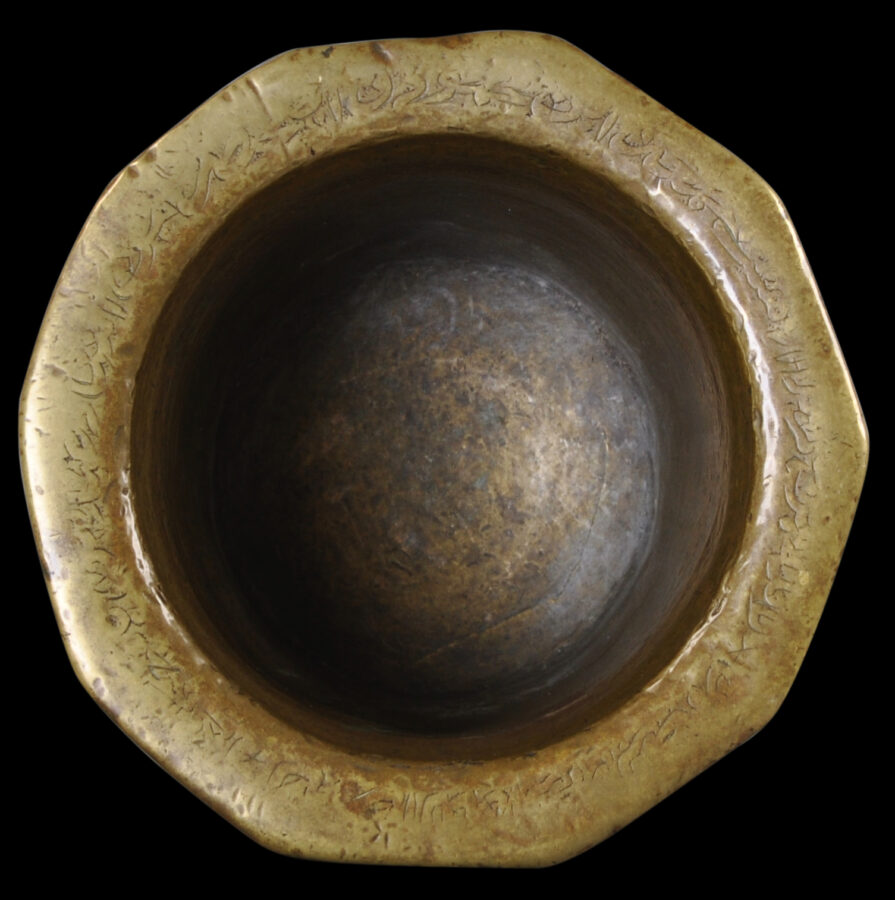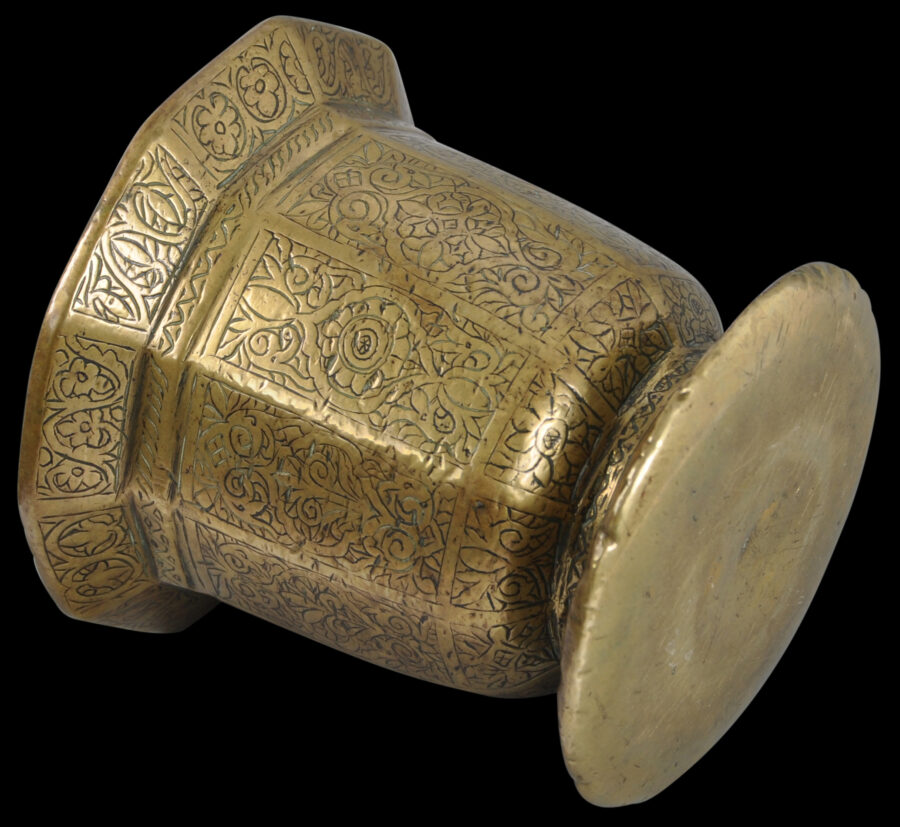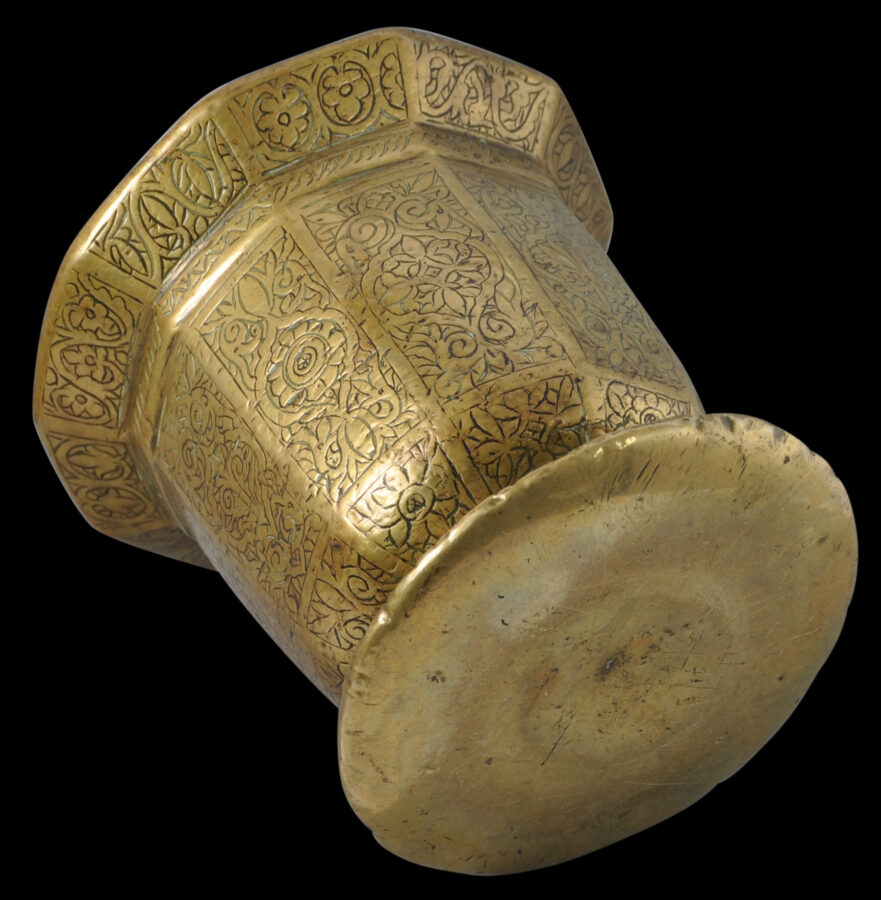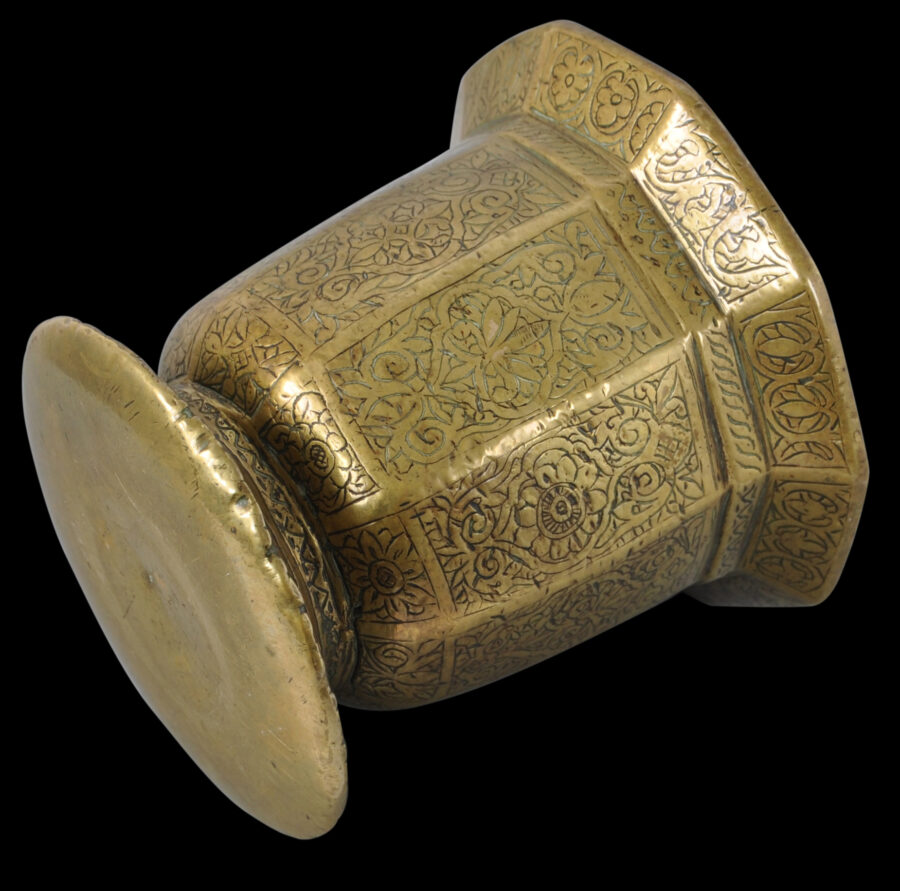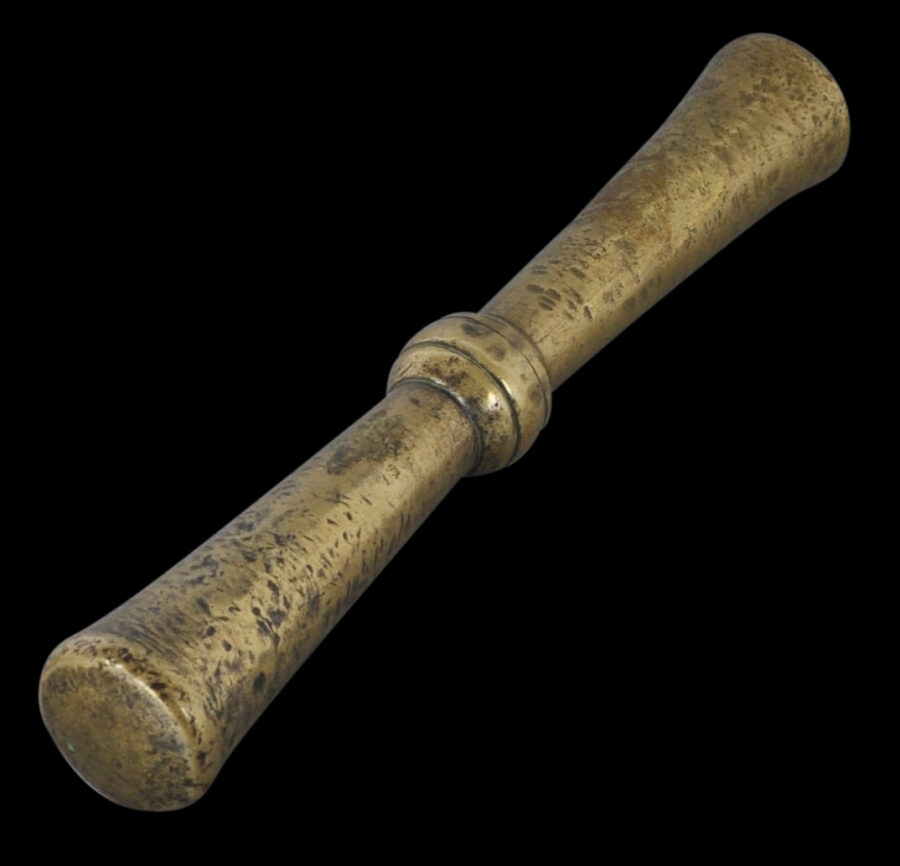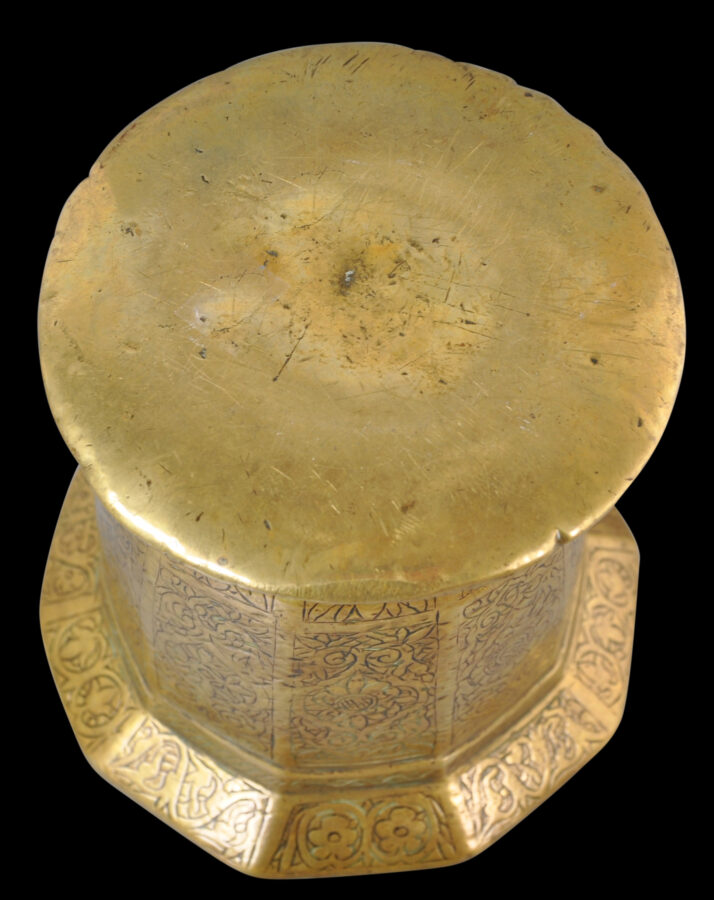This magnificent and massive pestle and mortar is of solid, cast brass. It would have been used by an apothecarist, perhaps in the Sufi tradition in the Deccan in India, for the preparation of herbs and balms.
The mortar sits on a flared foot, has ten sides, and a flared rim that is engraved all the way around with Arabic script. The sides, the undersides of the rim, and the foot are engraved with Mughal-esque arabesques and other foliate motifs.
The inscription about the rim is rudimentary and difficult to read. It is likely that its purpose was more talismanic and for incantation than actually meant to be read. This would be in keeping with the vessel’s likely intended purpose to be used in an apothecary, which would have involved a mix of science and magic.
The pestle is the correct match with the mortar. It is heavy and shows much wear from use and age.
The engraved motifs on the mortar, its ten sides, and its mass, all relate to a heavy bronze bowl also attributed to 15th century Deccan in Zebrowski (1997, p. 176) which the author posits might have been used for burning incense in the Shia shrines of the Deccan.
The pestle and mortar are in excellent condition. The patina of both is incontrovertible – both elements have clear, great age. The underside of the foot alone tells a story of much use with the vessel having been rocked back and forth despite its mass, as it was being use, so that the foot has become rounded around the edges. It is a very sculptural items, and also rare: we are not aware of another that has been published. It is also extraordinary that the pestle and the mortar have remained together through the centuries.
References
Zebrowski, M., Gold, Silver & Bronze from Mughal India, Alexandria Press, 1997.


